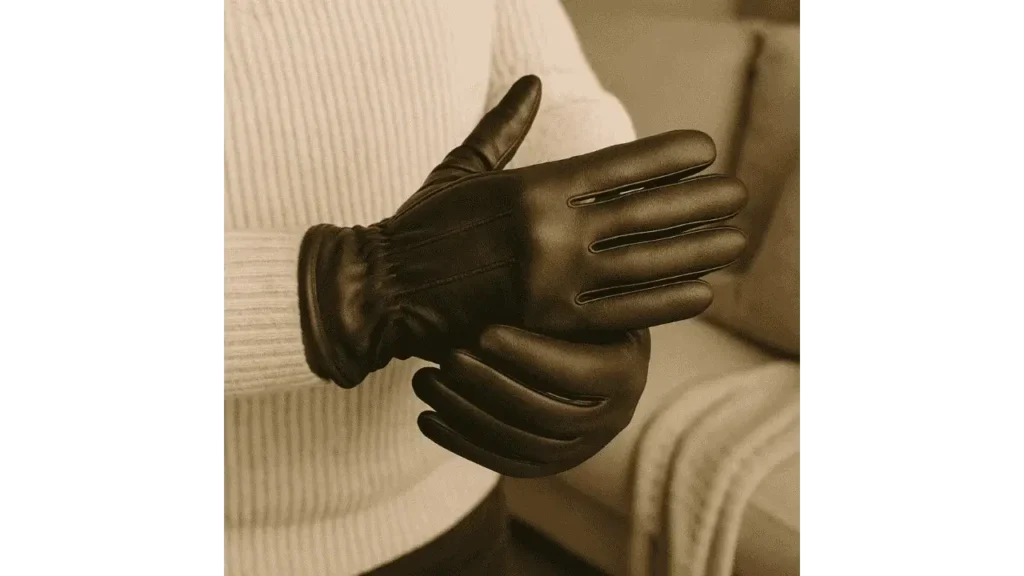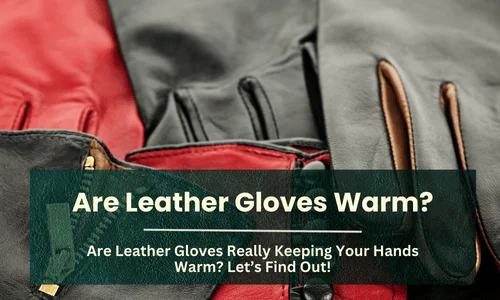Leather gloves can certainly offer warmth, but how well they insulate depends on multiple factors such as the type of leather, inner lining, and overall construction. While leather itself is naturally wind-resistant, it isn’t the most effective insulator on its own. A glove’s warmth greatly increases when paired with the right inner materials and a proper fit.
“Leather is great for blocking wind, but when it comes to deep cold, the lining is what really does the heavy lifting,” explains Karen Lowe, a cold-weather apparel specialist at ArcticWear Co.

The Science Behind Leather Warmth
Leather has a dense structure that blocks wind and traps a moderate amount of heat. This makes it superior to many synthetic materials in shielding against cold breezes. However, when exposed to low temperatures for extended periods, leather alone isn’t enough. That’s why most winter-ready leather gloves come with interior linings made from insulating fabrics to enhance their performance.
Types of Leather Gloves
The kind of leather used plays a major role in how warm gloves can be. Thicker options like cowhide and buffalo leather provide better insulation and durability, while thinner leathers such as lambskin or sheepskin offer a softer feel with less heat retention. Deerskin and goatskin are considered ideal by many for their balance between comfort and cold resistance, especially when paired with proper lining.
Read More: How to Wash Leather Gloves?
Lined vs. Unlined Leather Gloves
Unlined leather gloves are sleek and flexible, often favored for driving or light use in cool temperatures. However, they lack substantial insulation. Lined leather gloves include materials like fleece, wool, cashmere, or Thinsulate, all of which dramatically improve warmth. These linings work by trapping body heat and preventing cold air from penetrating the leather exterior.
Factors Affecting Leather Gloves’ Warmth
The Role of Thickness in Warmth
The thickness of the leather contributes to its ability to shield against the cold. Thick leather provides more resistance to wind and temperature drops, making it suitable for colder climates. However, too much thickness without flexibility can hinder movement, which is why insulation often comes from the inner lining rather than the leather itself.
Importance of a Proper Fit
A glove that fits snugly traps heat more effectively than a loose one. When gloves are too large, cold air circulates inside, reducing their insulating ability. A proper fit not only maximizes warmth but also ensures better hand mobility and overall comfort, especially during outdoor activities.
Insulation Materials
Some of the warmest leather gloves use advanced insulation materials like Thinsulate, which provides heat retention without bulk. Others use natural fibers like wool or cashmere for softness and warmth. These inner linings are key to turning an ordinary leather glove into a winter-ready essential.
“The lining makes or breaks the glove when it comes to warmth,” says Eliot Burns, senior product designer at FrostForm Gear.
Final Takeaways
While leather alone offers wind resistance and a sleek appearance, it’s the combination of proper insulation, leather type, and good fit that determines how warm leather gloves truly are. Lined leather gloves are best for colder weather, while unlined versions are more suitable for mild conditions. Investing in well-made leather gloves with appropriate linings ensures your hands stay warm, comfortable, and stylish no matter the season.
- How to Wear an Oversized Leather Jacket? Style Tips for a Casual Look - August 6, 2025
- How to Fold a Leather Jacket? - August 5, 2025
- How Should a Leather Jacket Fit a Woman? - August 1, 2025



